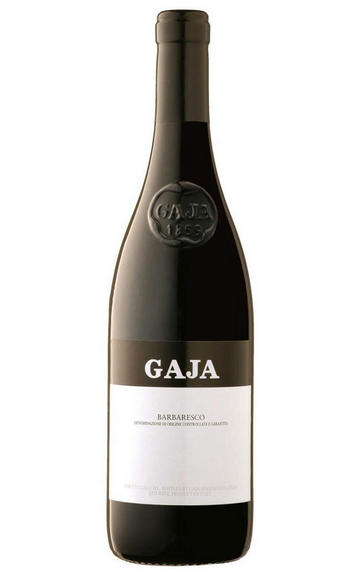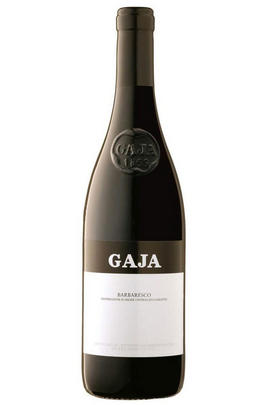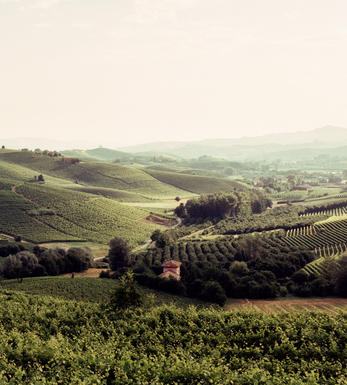
2017 Barolo, Conteisa, Gaja, Piedmont, Italy

Critics reviews
Antonio Galloni, Vinous
The Gaja 2017 Barolo Conteisa opes to an immediate sense of dimension and textural width that distinguishes this hot growing season. In this case, that additional volume and power are expertly contained and refined in this wine with fruit from the Cerequio vineyard of Barolo. Cerequio saw hail damage in 2016 and was more fortunate this year; however, the site generally remains quite protected from extreme weather conditions (compared to its adjacent vineyards). This wine excels most noticeably in terms of mouthfeel. The finish is silky and long and those more astringent 2017 tannins are gracefully absent here.
Drink 2025 - 2050
Monica Larner, The Wine Advocate (Jun 2021)
Gaja manages two different plots in Cerequio, from where most of the grapes for Conteisa come. Both exposures - southeast and east - mark the character of this wine. If Sperss is the Yin, Conteisa would be the Yang: It's dark fruited with black cherry and plum complemented by graceful wild herbs and mint, and a bloody, olive-like savouriness. Full-bodied and crisp, the tannins are firm, thick and dusty yet evolved.
Drink 2021 - 2040
Aldo Fiodelli, Decanter.com (Mar 2021)
Predominantly from within the cru of Cerequio on the border between Barolo and La Morra, Conteisa has been produced since 1996. The 2017 Barolo Conteisa has ripe aromas of red cherry, cinnamon, and licorice. The palate is forward and gushing with raspberry leather, iron-rich earth, and tobacco leaf. This is the most generous and giving of the three wines in this tasting, yet at the same time remains noble.
Drink 2022 - 2042
Jeb Dunnuck, jebdunnuck.com (May 2021)
About this WINE

Gaja
Angelo Gaja is Italy`s most renowned and dynamic wine personality and his impact on wine production in the last 30 years cannot be overestimated.
Angelo Gaja took over the family business in 1970 and, as he says: *The challenge was to maintain the basic power and depth of Nebbiolo while polishing the wines to give them richer colour, fuller fruit, better balance and a more refined style.'
In pursuit of this aim Gaja replanted many of the vineyards, installed temperature-controlled, stainless steel tanks, introduced the concept of ageing wines in small oak barrels and began releasing single vineyard Barbarescos. Most controversial of all, Gaja planted some Cabernet Sauvignon and Chardonnay on prime Barbaresco land.
Today Gaja has 101 hectares of vineyards divided into 32 separate plots and produces around 30,000 cases of wine a year. Gaja produces world-class wines that sell for world-class prices; his latest venture is in Tuscany where he has acquired an estate in Montalcino.

Barolo
Located due south of Alba and the River Tanaro, Barolo is Piedmont's most famous wine DOCG (Denominazione di Origine Controllata e Garantita), renowned for producing Italy's finest red wines from 100 percent Nebbiolo.
Its red wines were originally sweet, but in 1840 the then extant Italian monarchy, the House of Savoy, ordered them to be altered to a dry style. This project was realised by French oenologist Louis Oudart, whose experience with Pinot Noir had convinced him of Nebbiolo's potential. The Barolo appellation was formalised in 1966 at around 1,700 hectares – only a tenth of the size of Burgundy, but almost three times as big as neighbouring Barbaresco.
Upgraded to DOCG status in 1980, Barolo comprises two distinct soil types: the first is a Tortonian sandy marl that produces a more feminine style of wine and can be found in the villages of Barolo, La Morra, Cherasco, Verduno, Novello, Roddi and parts of Castiglione Falletto. The second is the older Helvetian sandstone clay that bestows the wines with a more muscular style. This can be found in Monforte d'Alba, Serralunga d'Alba, Diano d'Alba, Grinzane Cavour and the other parts of Castiglione Falletto. Made today from the Nebbiolo clones Lampia, Michet and Rosé, Barolo has an exceptional terroir with almost every village perched on its own hill. The climate is continental, with an extended summer and autumn enabling the fickle Nebbiolo to achieve perfect ripeness.
Inspired by the success of modernists such as Elio Altare, there has been pressure in recent years to reduce the ageing requirements for Barolo; this has mostly been driven by new producers to the region, often with no Piedmontese viticultural heritage and armed with their roto-fermenters and barriques, intent on making a fruitier, more modern style of wine.
This modern style arguably appeals more to the important American market and its scribes, but the traditionalists continue to argue in favour of making Barolo in the classic way. They make the wine in a mix of epoxy-lined cement or stainless-steel cuves, followed by extended ageing in 25-hectoliter Slavonian botte (barrels) to gently soften and integrate the tannins. However, even amongst the traditionalists there has been a move, since the mid-1990s, towards using physiologically (rather than polyphenolically) riper fruit, aided by global warming. Both modernist and traditional schools can produce exceptional or disappointing wines.
Recommended traditionalist producers:
Giacomo Borgogno, Giacomo Conterno, Bruno Giacosa, Elio Grasso, Marcarini, Bartolo Mascarello and Giuseppe Mascarello.
Recommended nmdernist producers:
Azelia, Aldo Conterno, Luciano Sandrone, Paolo Scavino and Roberto Voerzio

Nebbiolo
Nebbiolo is the grape behind the Barolo and Barbaresco wines and is hardly ever seen outside the confines of Piedmont. It takes its name from "nebbia" which is Italian for fog, a frequent phenomenon in the region.
A notoriously pernickety grape, it requires sheltered south-facing sites and performs best on the well-drained calcareous marls to the north and south of Alba in the DOCG zones of Barbaresco and Barolo.
Langhe Nebbiolo is effectively the ‘second wine’ of Piedmont’s great Barolo & Barbarescos. This DOC is the only way Langhe producers can declassify their Barolo or Barbaresco fruit or wines to make an early-drinking style. Unlike Nebbiolo d’Alba, Langhe Nebbiolo can be cut with 15% other red indigenous varieties, such as Barbera or Dolcetto.
Nebbiolo flowers early and ripens late, so a long hang time, producing high levels of sugar, acidity and tannins; the challenge being to harvest the fruit with these three elements ripe and in balance. The best Barolos and Barbarescos are perfumed with aromas of tar, rose, mint, chocolate, liquorice and truffles. They age brilliantly and the very best need ten years to show at their best.


Buying options
Add to wishlist
Description
The 2017 Barolo Conteisa is rich, ample and inviting. Sweet pipe tobacco, cedar and dried flowers lend captivating aromatic presence to the Gaja family's La Morra Barolo. Even so, the 2017 is quite closed today, which is rather unusual for a wine that is typically far more open in the early going. That's probably a good sign for the future, though. Time in the glass brings out the classic Conteisa red-toned fruit profile. More than anything else, I am so impressed with how the 2017 gets better and better with air. This is a terrific showing. Sadly, production is down by about 50% because of severe selection.
Antonio Galloni, Vinous
wine at a glance
Delivery and quality guarantee